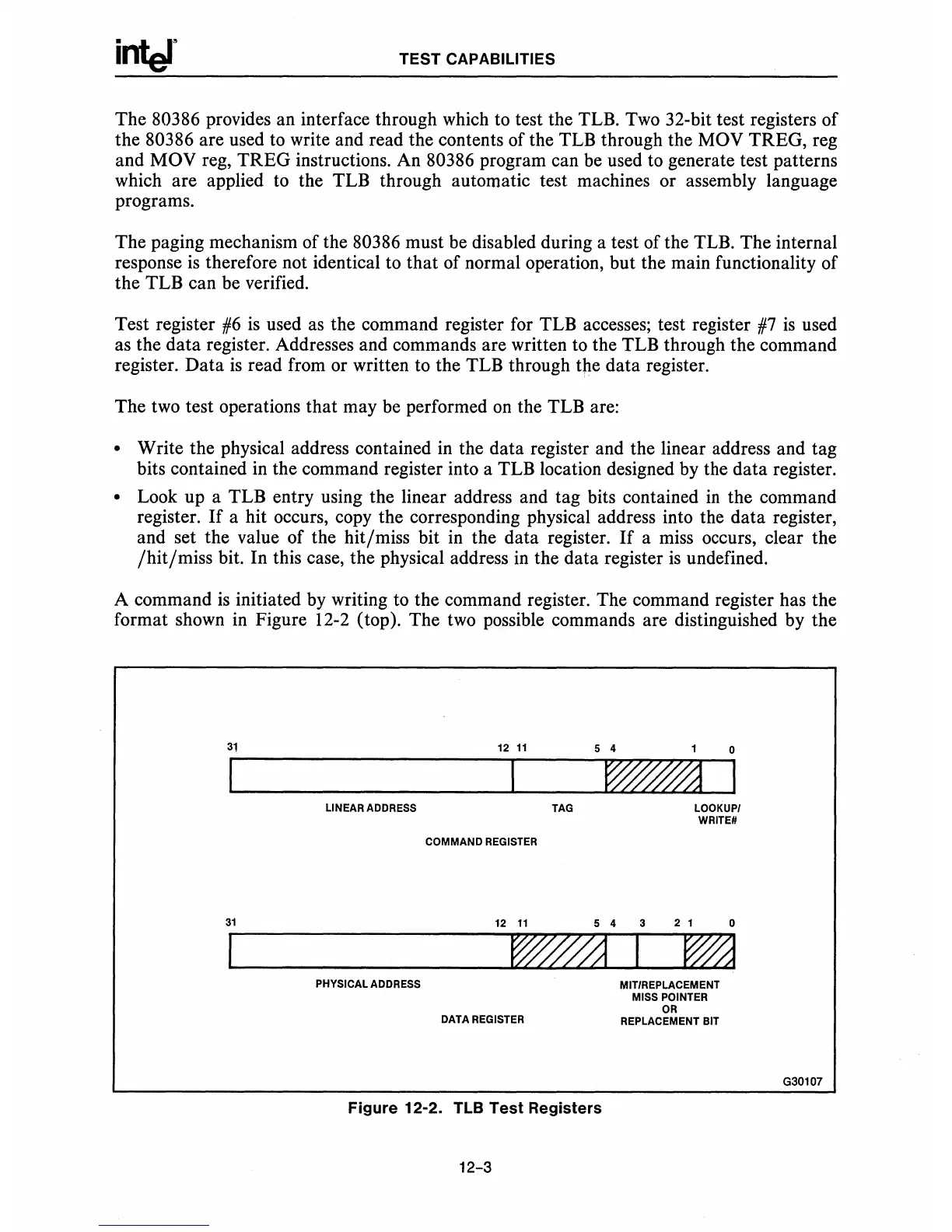TEST CAPABILITIES
The 80386 provides an interface through which to test the TLB.
Two
32-bit test registers of
the
80386 are used
to
write and read the contents of the TLB through the MOV TREG, reg
and
MOV reg, TREG instructions. An 80386 program can be used to generate test patterns
which are applied to the TLB through automatic test machines or assembly language
programs.
The paging mechanism of the
80386 must be disabled during a test of the TLB. The internal
response
is
therefore not identical to that of normal operation, but the main functionality of
the TLB can be verified.
Test register
#6
is
used
as
the command register for TLB accesses; test register
#7
is
used
as
the data register. Addresses and commands are written to the TLB through the command
register. Data
is
read from or written to the TLB through the data register.
The two test operations that may be performed
on
the TLB are:
• Write the physical address contained
in
the data register and the linear address and tag
bits contained
in
the command register into a TLB location designed by the data register.
• Look up a TLB entry using the linear address and tag bits contained
in
the command
register.
If
a hit occurs, copy the corresponding physical address into the data register,
and set the value of the hit/miss bit
in
the data register.
If
a miss occurs, clear the
/hit/miss
bit. In this case, the physical address
in
the data register
is
undefined.
A command
is
initiated
by
writing to the command register. The command register has the
format shown
in
Figure 12-2 (top). The two possible commands are distinguished by the
31
31
12
11
LINEAR ADDRESS
TAG
COMMAND
REGISTER
12
11
5 4
5 4
2 1
LOOKUP/
WRITE#
o
~I
PHYSICAL ADDRESS
DATA REGISTER
Figure 12-2. TLB
Test
Registers
12-3
MIT/REPLACEMENT
MISS POINTER
OR
REPLACEMENT BIT
G30107

